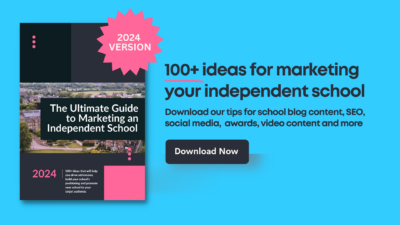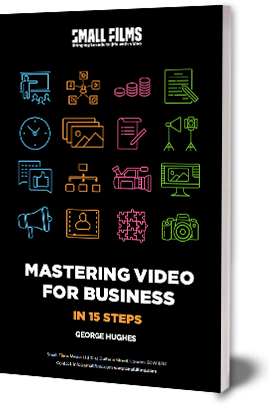As the start of the school year approaches, it’s a pivotal time to assess your school’s marketing efforts. This helps you to understand what has and hasn’t been working with your marketing strategy and pivot where you need to. This guide will walk you through the steps to perform a marketing audit for your school.
DO A SWOT ANALYSIS
Conducting a SWOT analysis will help you get a clear picture of where your school stands in terms of marketing:
- Strengths: What are your school’s strong points in marketing? This could include a solid social media presence, a loyal alumni network, or a high-performing website.
- Weaknesses: Identify areas where your marketing is falling short. Perhaps your email campaigns have low open rates, or your website isn’t mobile-friendly.
- Opportunities: Look for opportunities to enhance your marketing efforts. Are there emerging platforms or trends that your school could leverage? Is there a growing interest in specific programmes that your school offers?
- Threats: Identify external threats, such as new competitors in the area or changes in local demographics that could affect your school’s enrollment numbers.
EMAIL MARKETING
Define your goals
Start by reassessing your email marketing goals. Were they the right goals to fit in with your overarching marketing strategy? Ensure your goals are SMART and still in line with your school’s vision for 2025.
Analyse your segmentation
Were your emails suitably segmented to fit in with your goals? How you decide to segment your audience is dependent on your school’s marketing strategy, but this may be
- Contacts who have taken a particular action i.e. downloaded a prospectus
- Open day registrations
- Parents of current students
- Alumni
- Prospective parents interested in particular departments, i.e. art, sport or drama
Analyse previous email performance
A crucial part of auditing your email marketing strategy is analysing how your current emails are performing. This data is golden, as it will help you determine where improvements can be made, what is and isn’t resonating with the audience and where changes need to be made.
- Deliverability
- Open Rate
- CTR
- Conversion rate
- Unsubscribe rate
If your email marketing tool doesn’t have a great analytics dashboard, we recommend transferring the data into Excel so you can view each email’s performance against each other. Make sure to also analyse key elements such as the day and time of day an email was sent. An email may have only underperformed because it was sent at a time of day that didn’t work for the target audience.
Does the list need cleansing?
When analysing your email performance, always assess whether your email list needs cleansing. Are there contacts who haven’t engaged with emails for 6+ months who should be cleansed? Or are there contacts who shouldn’t be receiving emails that have ended up on your list?
Are the emails compliant with relevant regulations
When analysing your emails, a significant factor is ensuring they comply with any relevant regulations to schools whilst also being GDPR compliant. Seek specialist advice and also follow the guidance in this GDPR compliant recommendations article.
Assess whether your email marketing tool is fit for purpose
There are a wide range of email marketing tools out there, such as HubSpot, MailerLite or ActiveCampaign. And it’s all about finding the tool that works for your school’s email marketing needs.
WEBSITE
There are so many elements to auditing a school website that it might seem overwhelming on where to start. Simply put, there are two main areas to analyse: SEO and CRO.
Is your school website driving the right type and right amount of traffic?
Is your school website successfully converting the traffic?
SEO
Starting with SEO, as you need the volume of traffic to be able to convert, there are a wide range of areas that you can assess when auditing your website’s SEO performance. If you have an SEO tool, such as SEMrush, Moz or Ubersuggest, these tools will provide a topline SEO audit. But these audits often lack the depth and understanding you have of your industry.
Analyse your competitors’ SEO
It’s very important to remember that your SEO competitors aren’t necessarily who you ordinarily deem to be your competitors. Whilst the local private school is very much your competitor on paper, they might have poor SEO rankings, and in fact your SEO competitor is a different school. Consider how prospective students search. Are they looking for ‘best private schools for sport’ and the parents focus isn’t driven by location, or are they searching for ‘best independent schools in Berkshire’.
Run a technical SEO Audit
There are a host of great SEO experts who have articles focused on running an SEO technical audit. Our recommendation is to read these articles and follow their process step by step.
Backlinko – The 18 step SEO audit checklist
Digital Marketing Institute – How to perform an SEO audit
Neil Patel – Complete guide to performing SEO audits
Understand your Google Search Console data
A tool that provides fantastic insights into your website is Google Search Console. Here, you can see the queries someone is performing that lead to them landing on your site. This might open up a wealth of avenues you’ve not yet explored for your SEO strategy.
Analyse your local SEO
For parents who want to send their child to a school in the local area, your local SEO strategy is key. Is your school showing up in Google Maps? Do you have good reviews? Is your Google My Business page populated with excellent photography, and are all key details filled out? This information can make or break a parent’s decision to explore your school further.
CONVERSION RATE OPTIMISATION
Your website is your window into your school, so it’s important to ensure that it demonstrates your brand, your ethos, and all the key information about your school. To learn more about which pages are good to include, read our article – A school website checklist. 40+ page ideas to include.
Assess your website goals
Start by analysing your website goals. Are there key actions that you want your audience to take? This might be downloads of the school prospectus, number of enquiries, promotional school film views or views of a key page on your school website.
Once you’ve assessed your goals are the right goals, then you can see how the site performed against them.
Downloads of your school prospectus
Is it easy to find on the site?
Is it clear what the user will receive if they download it?
Is the form simple for the user to fill out?
Open Day Landing Page
When signing up to attend an Open Day, it’s key for a prospective parent/student to understand what they’re signing up for clearly. Therefore, it’s key that the page answers all their questions.
Are the dates and timings of the Open Day clear?
Are there FAQs such as information on parking or F&B,
Is it clear how to sign up and if multiple attendees can attend?
Is the format of the day clear, i.e show arounds, content, lunch, etc
For more information on how to clearly set up your Open Day landing page, then check out our Open Day Checklist.
Use heat mapping tools
Ideally, one to two months before your audit, you will have set up heat mapping software, such as Hotjar or Crazy Egg. These tools help provide actionable insights on how audiences are using your site. Are they struggling to find what they need? Are they bouncing at key points? The data provided by these tools can help you amend the site to better fit your audience’s needs.
Consider A/B testing pages
A/B testing can be a fantastic way to determine what resonates better with your audience. For key pages that are important to your school, consider creating two different versions to help you understand which is better at driving conversions.
Look at your CTAs
Your CTA is a key part of how well your site might convert. It’s important to consider where someone is in the stage of the funnel. For example, someone in the research stage might not be ready for an introductory call with your school. Instead, they are just looking to download a prospectus to find out more information and start weighing up your school against others on their shortlist.
SOCIAL MEDIA
Are the social channels correct for your target audience?
Start by assessing whether the social channels your school is on are correct for your target audience. It can be easy to feel like you should be across all channels and spread yourself too thin. Is your audience parents who are on Facebook, or is Instagram a better channel? Really consider where your audience hangs out so you’re not ploughing effort into a channel that won’t reap returns.
Evaluate your channel’s successes and failures.
Each of your social media channels will have associated analytics, or if you use a scheduling tool, you will have access to further analytics. Analyse which posts had the most engagement, the times and days that they were posted, whether the posts received positive or negative responses, and the type of post, i.e., video content, reels, text-heavy, longer-form, or short-form.
Assess whether your school’s brand messaging has been consistent
On social media, it’s important to show up consistently. Analyse all your content and determine whether the posts are on brand with your school’s values and ethos.
BRAND PERCEPTION
Surveys and Feedback: Conduct surveys with current students, parents, and alumni to gather feedback on their perception of the school’s brand. This will help you understand how your school is viewed and where improvements can be made.
DEVELOP AN ACTION PLAN
Develop a strategic action plan to improve your marketing efforts based on your findings. Your plan should include:
- Short-Term Actions: Immediate steps to address critical issues, such as optimising your website or launching a targeted ad campaign.
- Long-Term Strategies: Plans for sustained marketing efforts, like building a content marketing strategy, expanding your social media presence, or strengthening community partnerships.
- Resource Allocation: Determine what resources (budget, personnel, tools) are needed to implement your action plan effectively.
SET BENCHMARKS AND MEASURE PROGRESS
Establish clear benchmarks to measure the success of your new marketing initiatives. These benchmarks could include metrics like increased website traffic, higher enrollment numbers, or improved engagement on social media. Regularly review your progress and adjust your strategies as needed.
REPORT FINDINGS
Finally, prepare a detailed report summarising the results of your marketing audit. Share this report with key stakeholders, including school leadership and the wider marketing team. Ensure everyone is aligned on the next steps and understands how the audit’s findings will shape future marketing efforts.
If you’d like support from the Small Films team with your school’s content strategy, then don’t hesitate to contact us.






